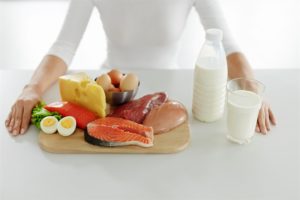 Antibiotics in Food
Antibiotics in Food
Are you concerned that antibiotics might be in your food? Have you heard of a “withdrawal period?
How do I know there are no antibiotics in my food?
Canada has strict regulations regarding how much time passes between the time an animal is last treated with antibiotics and when it is sent to be prepared to be sold to consumers. This is known as the “withdrawal period”, and it ensures that the antibodies have left the animals system before any product from an animal is sold as food.
Regular testing
The Canadian Food Inspection Agency (CFIA) regularly tests food products to make sure they do not contain more antibodies than the maximum limits allowed. Tests are in parts per billion, which would be like finding one drop in an entire swimming pool! For example, all 2.2 million milk pick-ups at farms in Canada each year are tested for antibiotics – and less than 0.009% test positive for antibiotics. On the extremely rare occasion that the milk does test positive for antibiotics, the whole truckload of milk is discarded and never reaches consumers!
See Our PDF to Learn More: DownloadPrint
SnapAg:
What are GMOs and are they okay to eat? What does organic farming look like? How are animals like chickens or cattle raised?
snapAG is a series of resources that invite students to explore the hot topics affecting the agriculture industry today. Topics range from organics, biotechnology, GMOs, livestock, and more.
Explore what’s trending in agriculture in Canada by browsing the topics here.
Sources available at: https://aitc-canada.ca/en-ca/learn-about-agriculture
snapAg is brought to you by Agriculture in the Classroom Canada and partners.



